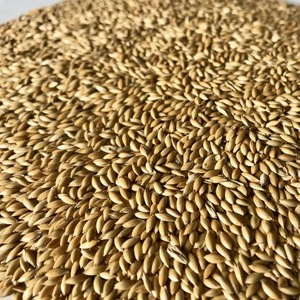Introduction to Tilapia Seed
Tilapia seed, often referred to as tilapia fry or fingerlings, plays a crucial role in aquaculture, providing a sustainable source of protein and income for farmers. Known for their rapid growth and adaptability, tilapia are a favorite fish species for both commercial and subsistence aquaculture. Understanding the benefits and characteristics of tilapia seed can significantly enhance your fish farming productivity.
Types of Tilapia Seed
There are several varieties of tilapia, each distinguished by their unique features and suitability for different aquaculture environments. Here are the most common types of tilapia seed:
- Oreochromis niloticus (Nile Tilapia): This is the most widely cultivated species, known for its fast growth and excellent market value.
- Oreochromis mossambicus (Mozambique Tilapia): Renowned for its durability, it can thrive in a variety of environments, making it a popular choice among farmers in diverse regions.
- Oreochromis aureus (Blue Tilapia): This species is particularly valued for its hardiness and tolerance to colder temperatures, ideal for areas with significant temperature fluctuations.
- Hybrid Tilapia: A mix of different species designed for enhanced growth rates and disease resistance, hybrids present an excellent option for intensive aquaculture systems.
Applications of Tilapia Seed in Aquaculture
The use of tilapia seed has diversified aquaculture practices, leading to its integration into a variety of farming systems. Here are some of the primary applications:
- Commercial Fish Farming: Tilapia seed is fundamental for large-scale production aimed at markets, supporting both local economies and international trade.
- Backyard Farming: Small-scale farmers benefit from tilapia seed as it allows for accessible protein sources and encourages self-sufficient lifestyles.
- Integrated Aquaculture: Tilapia can be farmed alongside crops or other fish species, creating efficient systems that maximize land and water resources.
- Research and Conservation: Tilapia seed is utilized in various studies aimed at improving aquaculture techniques and conserving genetic diversity.
Features and Advantages of Tilapia Seed
The remarkable features of tilapia seed make it an excellent choice for aquaculture ventures. Here are some noteworthy advantages:
- Rapid Growth Rate: Tilapia can reach market size in a matter of months, allowing for quick returns on investment.
- High Survival Rate: The resilience of tilapia fry leads to higher survival rates, reducing the risk of losses during cultivation.
- Versatile Feeding Habits: They thrive on a variety of feeds, including plant-based diets, which can lower feeding costs and support sustainable practices.
- Low Oxygen Requirements: Tilapia can tolerate lower oxygen levels compared to many fish species, making them suitable for farming in conditions that may be unfavorable for others.
- Market Demand: With the growing popularity of tilapia globally, farmers can expect a consistent demand for this fish, creating a lucrative market opportunity.













































































































































































































